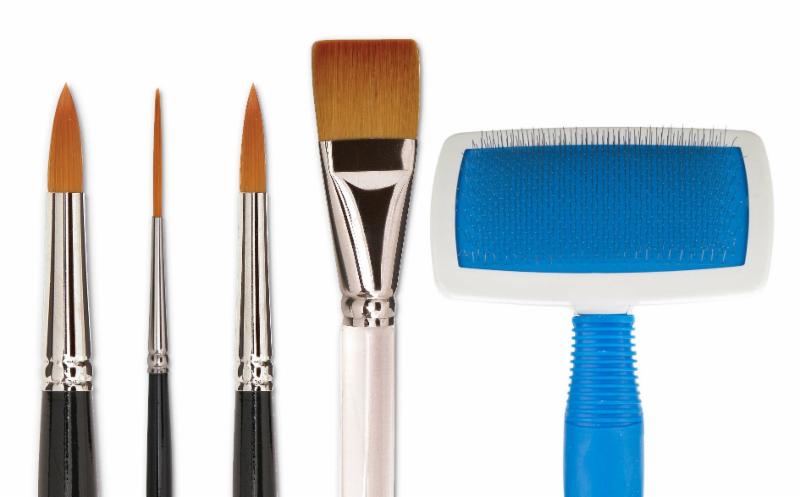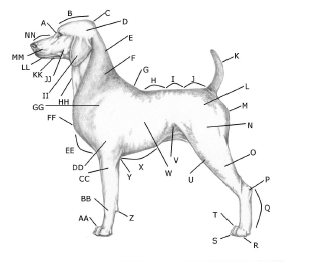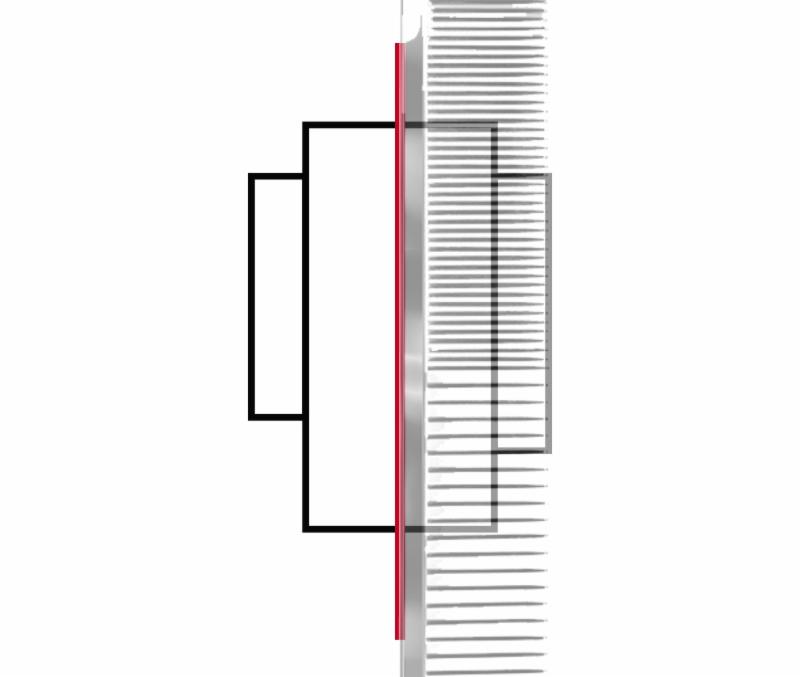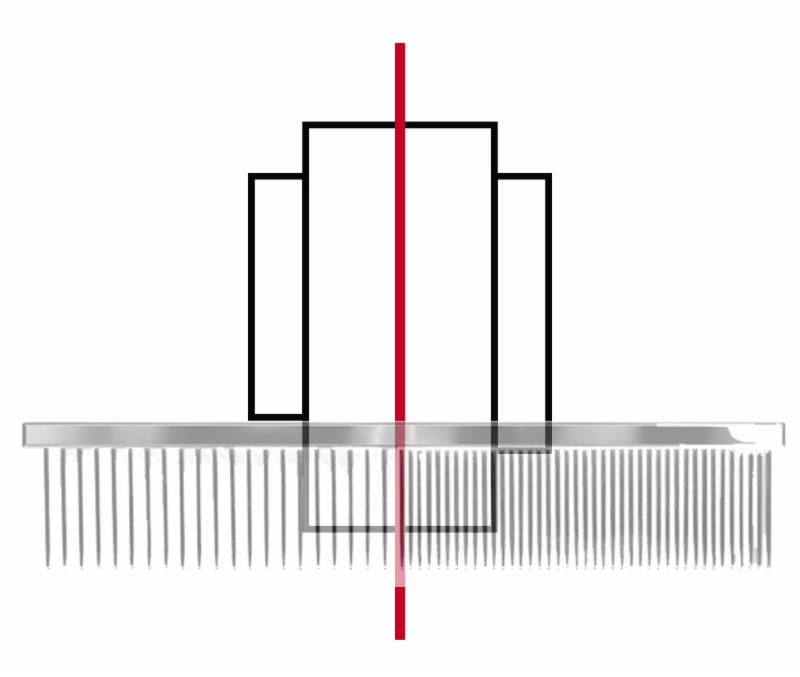Welcome to my blog! For the next few weeks, my marketing expert, Joelle Asmondy, will be filling in for me while I work on a large project. Joelle is a whiz with marketing. I can’t wait to see which helpful tidbits she shares with you! Enjoy!
 If you ask people in our industry if they think grooming and styling pets is an art form or a skilled trade, most would say that it’s a little of both. I agree. When you watch members of GroomTeam USA at work, their efforts are definitely works of art. Skills like theirs take years to develop. Today, I want to talk about one aspect of that development: learning to see like an artist.
If you ask people in our industry if they think grooming and styling pets is an art form or a skilled trade, most would say that it’s a little of both. I agree. When you watch members of GroomTeam USA at work, their efforts are definitely works of art. Skills like theirs take years to develop. Today, I want to talk about one aspect of that development: learning to see like an artist.
I’ve had the benefit of seeing hundreds of people learn to become pet groomers during my years at The Paragon School of Pet Grooming. I also have a Bachelor’s Degree in Art, which means I’ve taken a lot of classes to develop a range of skills that are similar to what we teach our students. Just like being a good groomer means more than loving to work with pets, learning to become an artist takes more than loving to paint or draw. It requires control and the ability to see things that others do not.
“Seeing” like an artist, or “developing your eye,” takes time and patience. Essentially what you are doing is training yourself to see:
- what is there
- what isn’t there
- what things look like now
- what the finished product should look like
- spatial alignment
- balance
- proportion
- perspective
Learning how to see these things takes practice. Here are a few tips to help get you there.
Have a Plan
Melissa Verplank has mentioned this concept when she says that you should “begin with the end in mind.” It involves imagination on your part and the ability to see into the future – in this case, a beautifully groomed pet.
When I’m about to start a drawing or painting, it begins with a blank canvas or sheet of paper. With a sculpture, it begins with a lump of clay or stone. Before I even get started, I’ve already spent time thinking about what I want to do. In my head, I’ve already figured out what I want the finished product to look like. I know what tools or colors I will use, and what it will look like each step of the way. I know the process I will follow and how involved it will be. I might have a series of detailed sketches to help keep me on course. Above all, I spend time before I ever touch pencil to paper just looking at the blank page and seeing what I will create on it. The pet is your canvas. Before picking up your clippers, take a minute to really look at what you’re working with so you know where you’re going.
LOOK – See the Shapes in the Clouds
 So I’m staring at the page… what am I looking at? What am I looking for? When I’m staring at that blank sheet of paper, I’m seeing what I will put there. As I stare into that whiteness, I’m watching the colors and lines take shape in my mind and align themselves on the page. It’s like my mind has produced a transparency of the finished product and has mentally created an overlay onto the page. All I have to do is put the marks on the paper. If I’m sculpting, I’m staring at the lump of rock and seeing the shape of what I want to create in the stone. All I have to do is remove all the stuff around it and let it out.
So I’m staring at the page… what am I looking at? What am I looking for? When I’m staring at that blank sheet of paper, I’m seeing what I will put there. As I stare into that whiteness, I’m watching the colors and lines take shape in my mind and align themselves on the page. It’s like my mind has produced a transparency of the finished product and has mentally created an overlay onto the page. All I have to do is put the marks on the paper. If I’m sculpting, I’m staring at the lump of rock and seeing the shape of what I want to create in the stone. All I have to do is remove all the stuff around it and let it out.
When grooming, first look at the pet before you. From your training, attending conformational dog shows, your AKC Complete Dog Book, and maybe your copy of Notes From the Grooming Table, you know what the dog should look like when it’s done. Learn to see the shape of the perfectly groomed pet through the overgrown coat, like transparent layers stacked one on top of the other. When you can see that perfectly groomed “after” image clearly in your mind, you can begin the process of “erasing” anything extra that blocks that view.
Be able to picture your finished product – after all, if you don’t know where the finish line is, how will you know you’ve completed the race?
Know Your Landmarks and Learn the Art of Navigation
 Trim styles are all about anatomy. Groomers need to know their breed standards and to know them they need to understand anatomy. If you’re a visual learner, get out your reference material and study the images until you can see them on any dog that walks into your salon. If you’re a tactile student and learn by doing, get those books out and learn to find reference points on dogs through your sense of touch. Feel where the point of rump is, the point of shoulder, and the barrel of the chest. If you can’t see them, learn your anatomy reference points by touch. Then learn to do both. Developing your knowledge base creates reliable instincts and reflexes.
Trim styles are all about anatomy. Groomers need to know their breed standards and to know them they need to understand anatomy. If you’re a visual learner, get out your reference material and study the images until you can see them on any dog that walks into your salon. If you’re a tactile student and learn by doing, get those books out and learn to find reference points on dogs through your sense of touch. Feel where the point of rump is, the point of shoulder, and the barrel of the chest. If you can’t see them, learn your anatomy reference points by touch. Then learn to do both. Developing your knowledge base creates reliable instincts and reflexes.
Learn how to Measure Balance and Proportions Visually
Have you even been on a diet? Have you ever measured out quantities of food? Were you surprised by how much or how little a cup of anything was? With practice, you could eyeball a quarter cup of yogurt or 4 ounces of chicken pretty accurately, right? Didn’t it speed up the process?
The same thing is true when it comes to visual measurements. With practice, you get better and more efficient. I learned it in art school by using a pencil or my thumb, but groomers can use a trusty comb to do this trick.
The Eye Exam

Imagine yourself grooming a dog. You know that the right side has to match the left. Standing directly in front of the dog, imagine a straight line dividing the pet in half. Compare each side to the other, using specific points of reference as a guide. Look for landmarks on the pet’s head, body, and legs that require symmetry. Stepping back and looking from side to side will help. If you know things are off, but can’t figure out why, hold up your comb and cover up one side, then the other. It’s kind of like an eye exam where you read the chart first with your right eye, then your left. Think of it like a game of, “Spot the Differences.” Make it fun so it becomes less frustrating.
Thumbs Up
Have you ever wondered why artists extend their thumbs, or hold up a pencil or brush and stare at it at arm’s length? What they’re doing is making visual measurements and that thumb or brush is the ruler.
For this one, you’re still standing back and facing the pet head-on and imagining that line dividing the pet in equal halves. Are your ears the same length? Hold your comb even with the bottoms of the ears and perpendicular to the floor. You’ll be able to see which one is longer and be able to even them out.
Take a Step Back
Step back from the dog so you can see the entire animal. As artists, one of the worst habits we fall into is spending too much time working in one specific area. We have good reasons for it – we want it to be perfect. The problem is that while you’ve been tinkering away and nitpicking at that one foot, you’ve lost all sense of perspective and balance with the rest of the body. Now, you’ve got one foot smaller than the rest, so you have to tighten up the other three. You do that, then realize that the legs are now off, so you tighten them up, too. Suddenly, you see that by shortening the legs, the body is out of whack, and you’ve lost control. Losing control = losing time. By zooming in, you’ve created more work for yourself and lost time. That’s not a winning combination.
So what happened? Well, you basically made a rookie carpenter’s mistake. When you shorten up one table leg without doing proper measurements, the table wobbles. Standing too close or failing to look at the whole dog regularly results in perspective-based mistakes. Standing back allows you to see things more clearly.
Developing your artistic eye is not only helpful – it’s practical. By training your eyes to see what you need them to see, you’ll save time, become more efficient, and achieve a more balanced trim. You’ll gain confidence in your abilities and your customers will see the difference. Understanding these visual measurement tricks and putting them into practice is one small step toward becoming the groomer you know you can be. It’s worth the time to learn to see like an artist and unleash your own potential.
Did this help? Tell us how you unleash YOUR inner artist on the Learn2GroomDogs Facebook page.
Click here for a complete video list to make searching Learn2GroomDogs.com even easier!
Make it a great day!
~Joelle Asmondy
 How many dogs a day you should groom is one of the BIG gray areas! The number will be different for everybody. Some people feel overwhelmed grooming even three dogs in a full day. Other people can do 16 while barely breaking a sweat.
How many dogs a day you should groom is one of the BIG gray areas! The number will be different for everybody. Some people feel overwhelmed grooming even three dogs in a full day. Other people can do 16 while barely breaking a sweat.

 If you ask people in our industry if they think grooming and styling pets is an art form or a skilled trade, most would say that it’s a little of both. I agree. When you watch members of GroomTeam USA at work, their efforts are definitely works of art. Skills like theirs take years to develop. Today, I want to talk about one aspect of that development: learning to see like an artist.
If you ask people in our industry if they think grooming and styling pets is an art form or a skilled trade, most would say that it’s a little of both. I agree. When you watch members of GroomTeam USA at work, their efforts are definitely works of art. Skills like theirs take years to develop. Today, I want to talk about one aspect of that development: learning to see like an artist. So I’m staring at the page… what am I looking at? What am I looking for? When I’m staring at that blank sheet of paper, I’m seeing what I will put there. As I stare into that whiteness, I’m watching the colors and lines take shape in my mind and align themselves on the page. It’s like my mind has produced a transparency of the finished product and has mentally created an overlay onto the page. All I have to do is put the marks on the paper. If I’m sculpting, I’m staring at the lump of rock and seeing the shape of what I want to create in the stone. All I have to do is remove all the stuff around it and let it out.
So I’m staring at the page… what am I looking at? What am I looking for? When I’m staring at that blank sheet of paper, I’m seeing what I will put there. As I stare into that whiteness, I’m watching the colors and lines take shape in my mind and align themselves on the page. It’s like my mind has produced a transparency of the finished product and has mentally created an overlay onto the page. All I have to do is put the marks on the paper. If I’m sculpting, I’m staring at the lump of rock and seeing the shape of what I want to create in the stone. All I have to do is remove all the stuff around it and let it out. Trim styles are all about anatomy. Groomers need to know their breed standards and to know them they need to understand anatomy. If you’re a visual learner, get out your reference material and study the images until you can see them on any dog that walks into your salon. If you’re a tactile student and learn by doing, get those books out and learn to find reference points on dogs through your sense of touch. Feel where the point of rump is, the point of shoulder, and the barrel of the chest. If you can’t see them, learn your anatomy reference points by touch. Then learn to do both. Developing your knowledge base creates reliable instincts and reflexes.
Trim styles are all about anatomy. Groomers need to know their breed standards and to know them they need to understand anatomy. If you’re a visual learner, get out your reference material and study the images until you can see them on any dog that walks into your salon. If you’re a tactile student and learn by doing, get those books out and learn to find reference points on dogs through your sense of touch. Feel where the point of rump is, the point of shoulder, and the barrel of the chest. If you can’t see them, learn your anatomy reference points by touch. Then learn to do both. Developing your knowledge base creates reliable instincts and reflexes.

